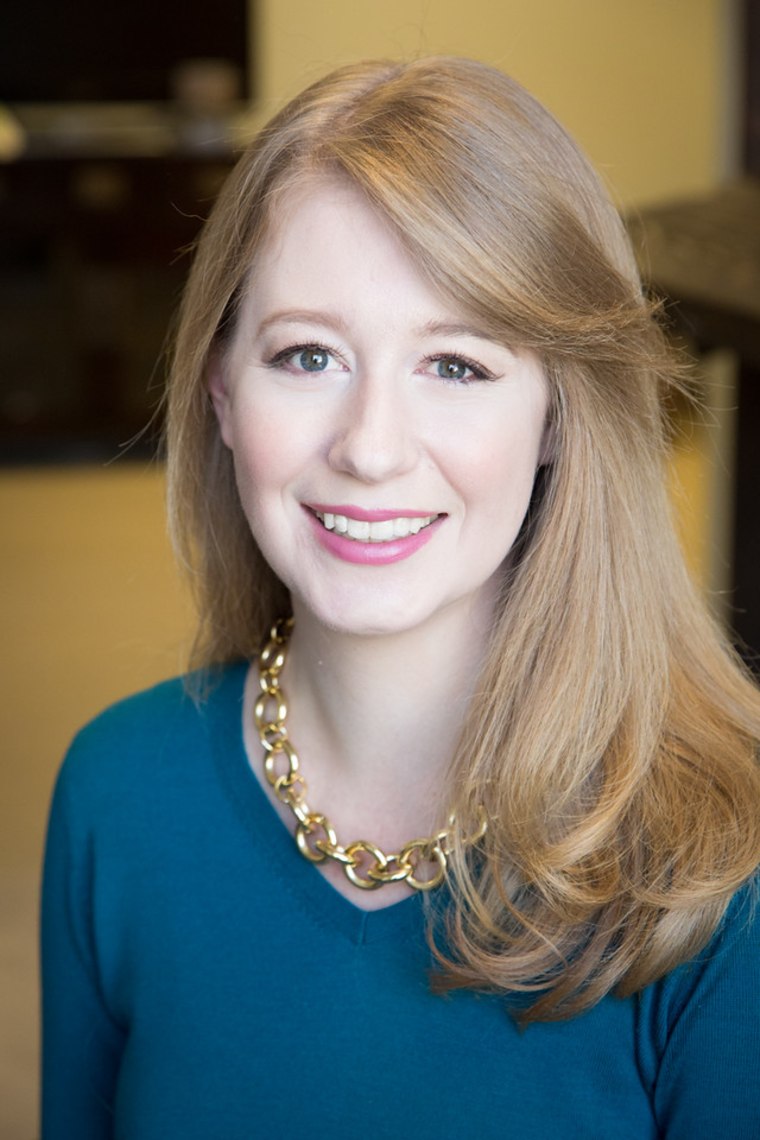In the 2012 presidential election, Twitter was the gold standard for being digitally savvy, playing a huge role in how the public -- particularly millennials -- viewed the candidates. The social media platform set the tone for debates, speeches and the party conventions. At the time, the 2012 election cycle broke Twitter records: with Election Day being the most tweeted event in U.S. history.
But just a few years, and countless social apps and websites, later, there's more to being on the digital upswing than crafting a 140-character tweet -- and declared and potential 2016 candidates will need to broaden their range if they want to make a splash in this election.
These eight women leading the digital-meets-political landscape are advising candidates on how they can maximize their outreach on digital, whether it be on platforms like Facebook, Snapchat and YikYak - or through fundraising and building networks.

msnbc: Tell me a little bit about Rising Tide Interactive. How is your firm gearing up for 2016 and what role do you envision playing in this election cycle?
SG: Rising Tide Interactive is a Democratic/progressive digital media consulting agency specializing in direct response and persuasion/GOTV digital advertising, as well as email fundraising. We have often focused on helping Democrats win in states where our party traditionally hasn not had that much success, like Indiana and North Dakota. Two of our four partners are women, along with the majority of our staff. We also have a strong track record working for women candidates, including Senator Jeanne Shaheen, Senator Kirsten Gillibrand, and Governor Gina Raimondo.
While we are still filling out our roster of campaigns for 2016, we tend to specialize in statewide races, but we will also be working within states to help Democrats win at the state legislative level, and we hope to have a hand in the presidential contest as well. It feels as though things are beginning to pick up a lot more quickly this cycle than they have in the past.
msnbc: What is your role at the company and as an innovator in the political tech landscape?
SG: We are a small firm with big clients, so I do a bit of everything, from managing staff and budgets, to business development, to developing and implementing seven-figure media plans for national clients.
The role I am most passionate about is using digital to come up with new answers to old questions. Especially when you have the chance to really dig into polling data, we can target voters with a level of specificity that would have been unimaginable just a few years ago. So, working with clients to build innovative, data-driven media plans that help win elections is really my favorite part of my job.
msnbc: What are the challenges being a woman leader in the digital political world, both dominated by men?
SG: I think it’s important to avoid unconsciously slipping into the role of caretaker. It’s tempting to, say, bring coffee and donuts to an early morning meeting because that’s a nice thing to do and you want people to like you. But if you’re always the one bringing snacks, or tidying up the room, or recognizing staff birthdays, then people start seeing that as your role and taking you less seriously as a strategist. It’s not fair, but that’s how it usually plays out. You have to not bring the donuts and trust that people are going to like you anyway.
"On digital more than anywhere else people can sniff out a phony and they won’t tolerate it."'
msnbc: In your career, you’ve worked on digital strategy for a number of politicians and candidates. What’s the best thing a candidate can do on digital to gain an edge? On the flip side, what’s something that could tarnish their campaign?
SG: Absolutely the number one thing a candidate can do to gain an edge online is create authenticity. On digital more than anywhere else people can sniff out a phony and they won’t tolerate it. That doesn’t mean that the candidate has to be sitting there typing up fundraising appeals or placing digital buys – that’s not realistic – but it does mean that it’s important to develop, and then stick to, an authentic voice.
Beyond that, it really varies by the size of the campaign. For a larger campaign, it's probably cultivating a large, responsive donor base online. For smaller campaigns, it’s thinking really strategically about where to invest your media dollars. TV can be a pretty inefficient medium for smaller races, and there’s only so much you can do through the mail. I think something that’s really exciting for 2016 is that a lot of the sophisticated digital targeting that has been pioneered by big races over the last few cycles is becoming available to and being adopted by state legislative and even local races.
msnbc: Digital strategy and technology have become much more central to campaigns over the last decade. What are some of your predictions for digital trends in campaigns in 2016?
SG: The move to target digital advertising based on offline data is accelerating and will continue to do so. In the past the technology underpinning this type of targeting was the use of browser cookies, which has been great but carries some inherent limitations. That will continue to be of great use to campaign but we're now using commercial data companies to match voter files and other custom lists to profiles and devices, which gives us a lot more options.
The second is the use of digital for research and polling. Using YouTube and other platforms we can get statistically significant data on the relative effectiveness of messages at a much lower cost than traditional methods, and with conditions that more closely mirror an authentic user experience than, say, a focus group.
Check out the rest of the featured women here!